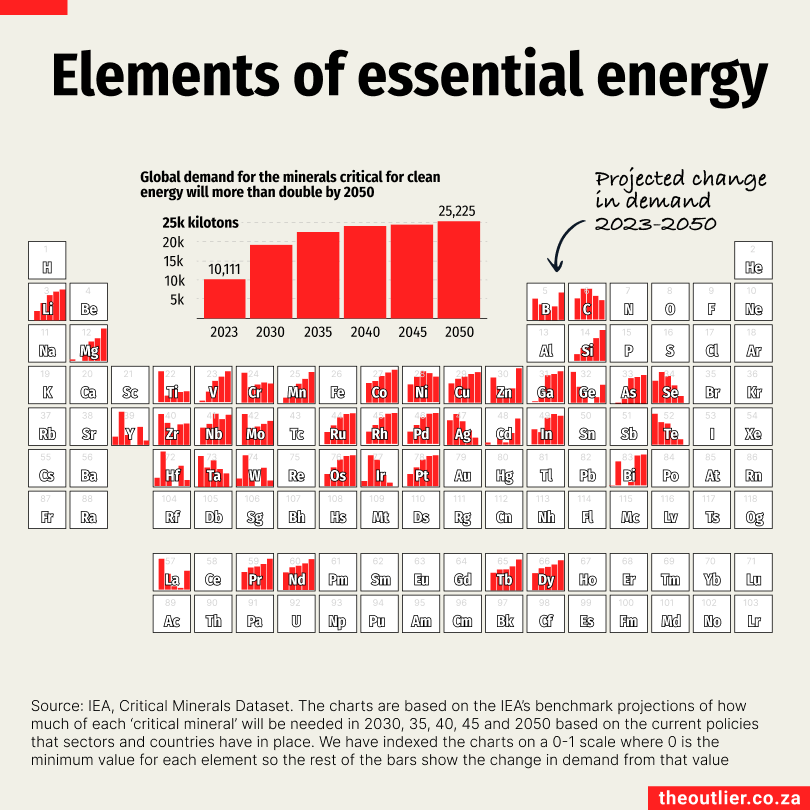
Clean energy systems require so-called critical minerals. There are five core ones, according to the International Energy Agency (IEA): copper, cobalt, lithium, nickel, graphite and rare earths. But there are many others, such as arsenic, bismuth, gallium, germanium, hafnium, magnesium, manganese, niobium, platinum group metals, tantalum, tungsten and vanadium, all of which play different roles in energy tech.
Demand for critical minerals is expected to more than double by 2050. In the periodic table above, the bars in each ‘critical element’ for clean energy show the IEA’s projection of global change in mineral demand between 2023 and 2050 based on the existing climate change and other policies of countries and sectors.
If countries do actually fully implement the changes needed to cut their greenhouse gas emissions in line with the Paris Agreement, which aims to limit global temperature rise to below 2°C, then the quantity of these minerals required would quadruple, according to the IEA’s projections.
Get the data used in this chart on DataDesk
Demand for critical minerals is expected to more than double by 2050. In the periodic table above, the bars in each ‘critical element’ for clean energy show the IEA’s projection of global change in mineral demand between 2023 and 2050 based on the existing climate change and other policies of countries and sectors.
If countries do actually fully implement the changes needed to cut their greenhouse gas emissions in line with the Paris Agreement, which aims to limit global temperature rise to below 2°C, then the quantity of these minerals required would quadruple, according to the IEA’s projections.
Get the data used in this chart on DataDesk
